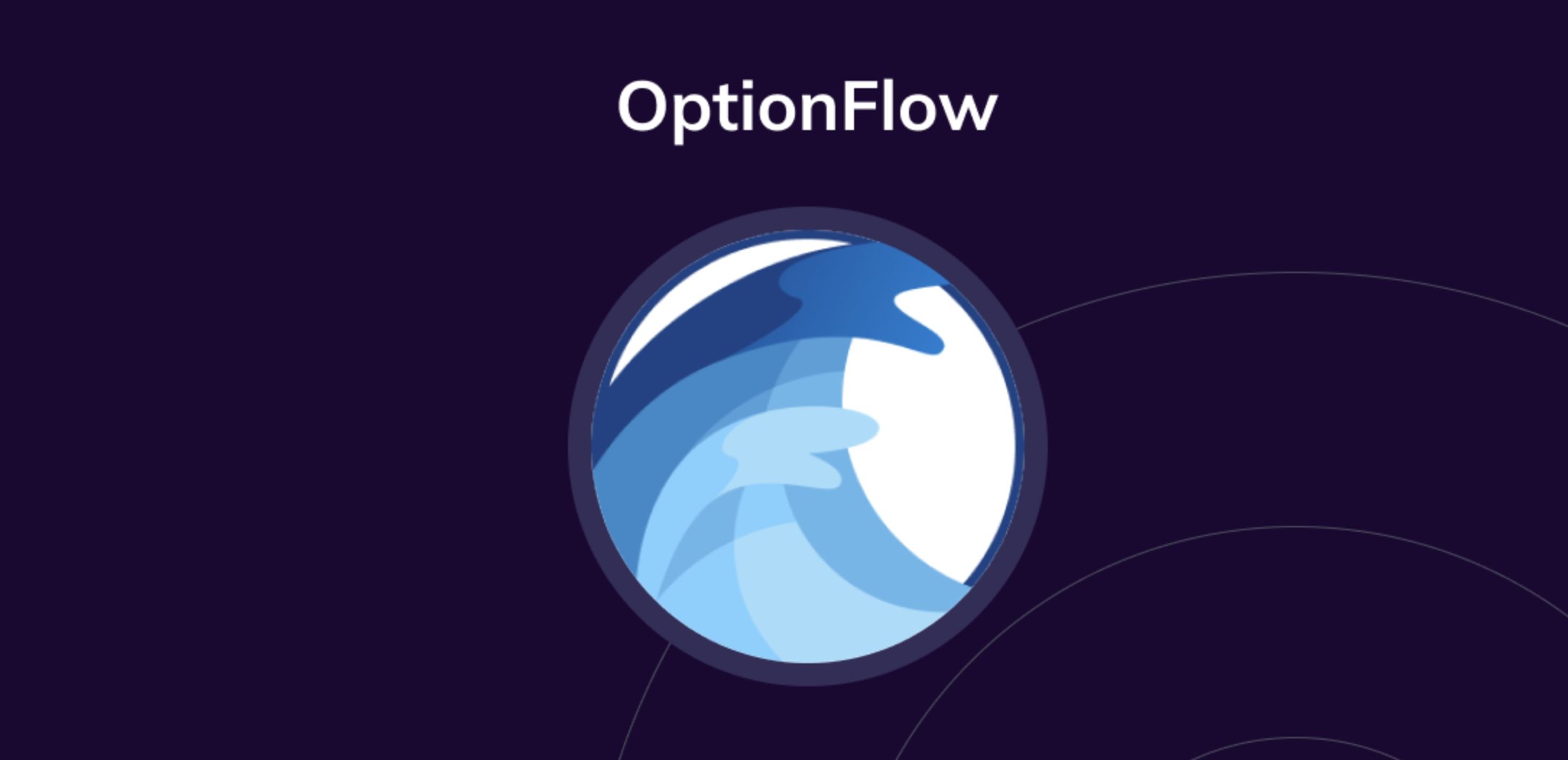OptionFlow (OPT), a revolutionary decentralized option protocol, is poised to redefine the decentralized finance (DeFi) landscape by introducing an advanced platform for options trading on the Cardano blockchain. This innovative platform aims to empower individuals with financial freedom, offering a new level of accessibility and transparency in crypto options trading.
Central to OptionFlow’s mission is the democratization of complex financial instruments. Utilizing the secure and scalable infrastructure of the Cardano blockchain, OptionFlow provides a robust environment for trading options. The platform enables users to effortlessly mint decentralized call and put options for Cardano tokens, opening up a wide array of strategic trading opportunities.
The platform’s user-friendly design simplifies the execution of options, making it approachable for newcomers to the crypto options market. An upcoming feature is an advanced option-DEX trading platform, which promises to enhance the trading experience by enabling detailed analysis of options created with the OptionFlow protocol.
Derivatives 101
Derivatives are sophisticated financial instruments whose value is linked to the performance of an underlying asset, index, or security. They encompass a broad range of products, including futures, options, swaps, and forwards. Among these, options are particularly notable for their versatility and strategic importance.
An option gives the holder the right, but not the obligation, to buy or sell an underlying asset at a predetermined price within a specified time frame. There are two main types of options: call options, which provide the right to buy, and put options, which offer the right to sell. Options are unique in their ability to allow investors to hedge against market risks, speculate on future price movements, and leverage their investment.
Let’s imagine that it’s 2040 and you’re considering a strategy to benefit from a potential increase in ADA’s price, currently at $150, while also wanting to limit your downside risk if there is a price drop, buying a call option can be a suitable approach. In this scenario, let’s examine a call option with a strike price of $160, which is above ADA’s current market price.
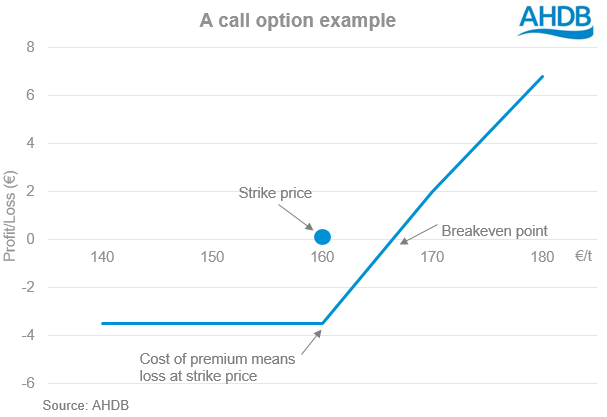
Buying a Call Option Contract
- Scenario: You decide to purchase a call option contract for ADA with a strike price of $160.
- Strike Price: This is the set price at which you can buy ADA if you exercise the option. Here, the strike price is $160, higher than the current market price of $150.
Understanding Premiums
- Premium: This fee is what you pay to obtain the call option. The premium is influenced by the difference between ADA’s market price and the strike price, and the time left until expiration. The premium is essentially the cost for securing the right to buy ADA at a future specified price.
In the Money vs. Out of the Money
- In the Money: If ADA’s market price exceeds the strike price (e.g., rises to $170), the call option is ‘in the money’, allowing you to buy ADA at $160, which is profitable given its higher market value.
- Out of the Money: If ADA’s price remains below $160, the option is ‘out of the money’, and exercising it wouldn’t be financially wise since ADA can be bought cheaper in the market.
Portfolio Benefits
- Profit Opportunity: By buying the call option, you aim to capitalize on ADA’s price growth. If the price goes above the strike price, you can exercise the option, buying ADA at $160 and potentially selling it later at a higher market rate.
- Controlled Risk: The risk is confined to the premium paid. If ADA doesn’t exceed the strike price, your maximum loss is the premium, maintaining the chance for gains from any future price increases of ADA.
What is OptionFlow?
OptionFlow is a decentralized option protocol on the Cardano blockchain, tailored for trading options in the cryptocurrency market. It enables users to mint (write) and trade call and put options for various Cardano tokens, bringing complex financial strategies from traditional markets into the realm of cryptocurrencies.
The core aim of OptionFlow is to democratize access to options trading, making it accessible and transparent for a broader user base. Users can mint options for any Cardano Native Token, facilitating a range of trading strategies, from optimizing returns to effective risk management.
A standout feature of OptionFlow is its integration with MuesliSwap, a decentralized marketplace. This integration makes trading options more straightforward, allowing users to easily find and trade options that align with their individual trading goals.
In the volatile world of crypto markets, OptionFlow also acts as a crucial tool for portfolio protection. By enabling the purchase of put options, it offers users a method to hedge against potential declines in token prices, adding a layer of security to their investments.
OptionFlow is significant in its contribution to enhancing the DeFi ecosystem on the Cardano blockchain. It brings the intricacies of options trading to a wider audience, merging the complexity of traditional financial instruments with the advantages of decentralized finance. This innovation not only expands the trading strategies available to crypto investors but also plays a vital role in the growth and sophistication of the DeFi space.
An important piece of news about the project is that the mainnet is launching soon:
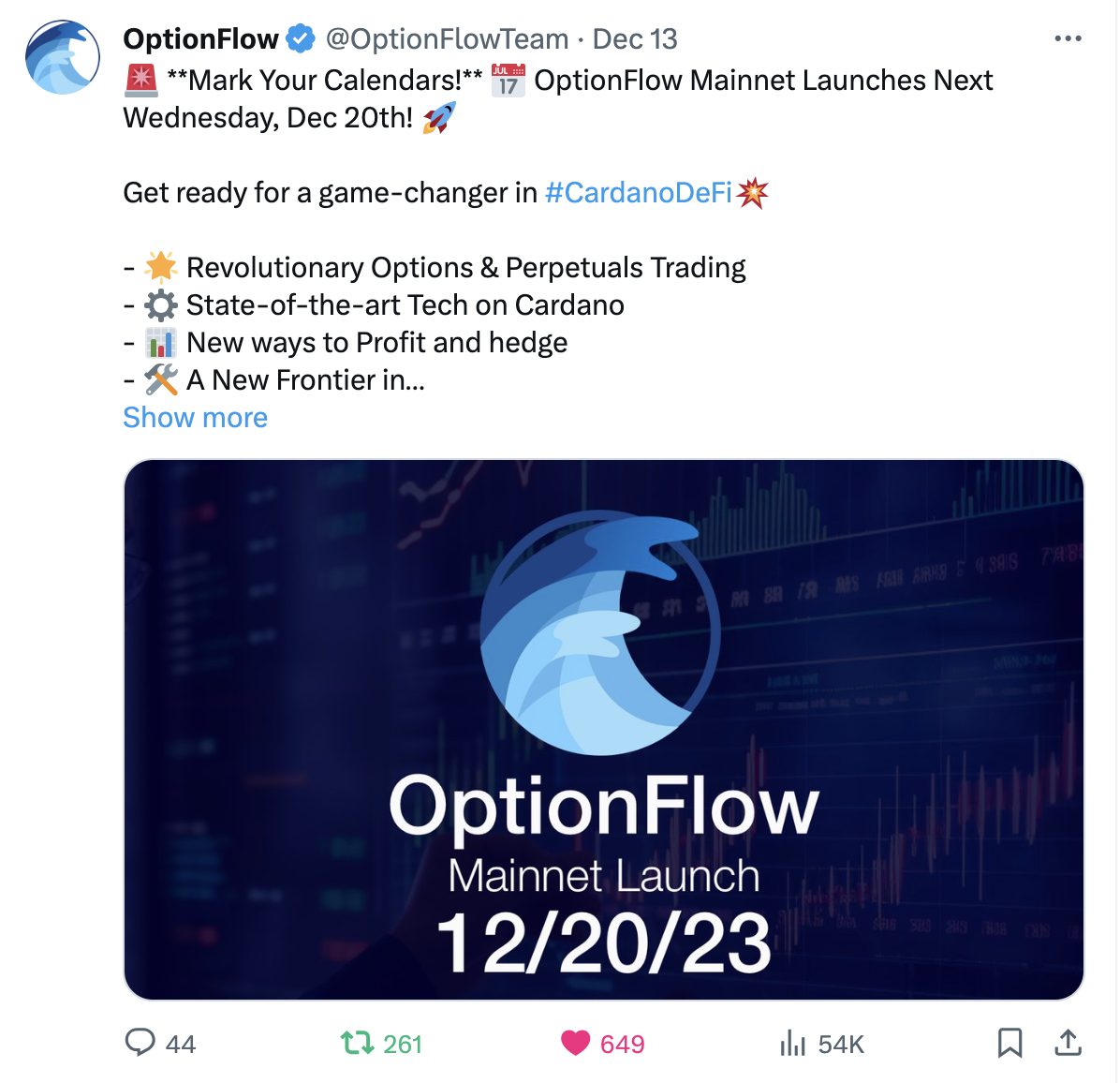
And they passed their code audit:
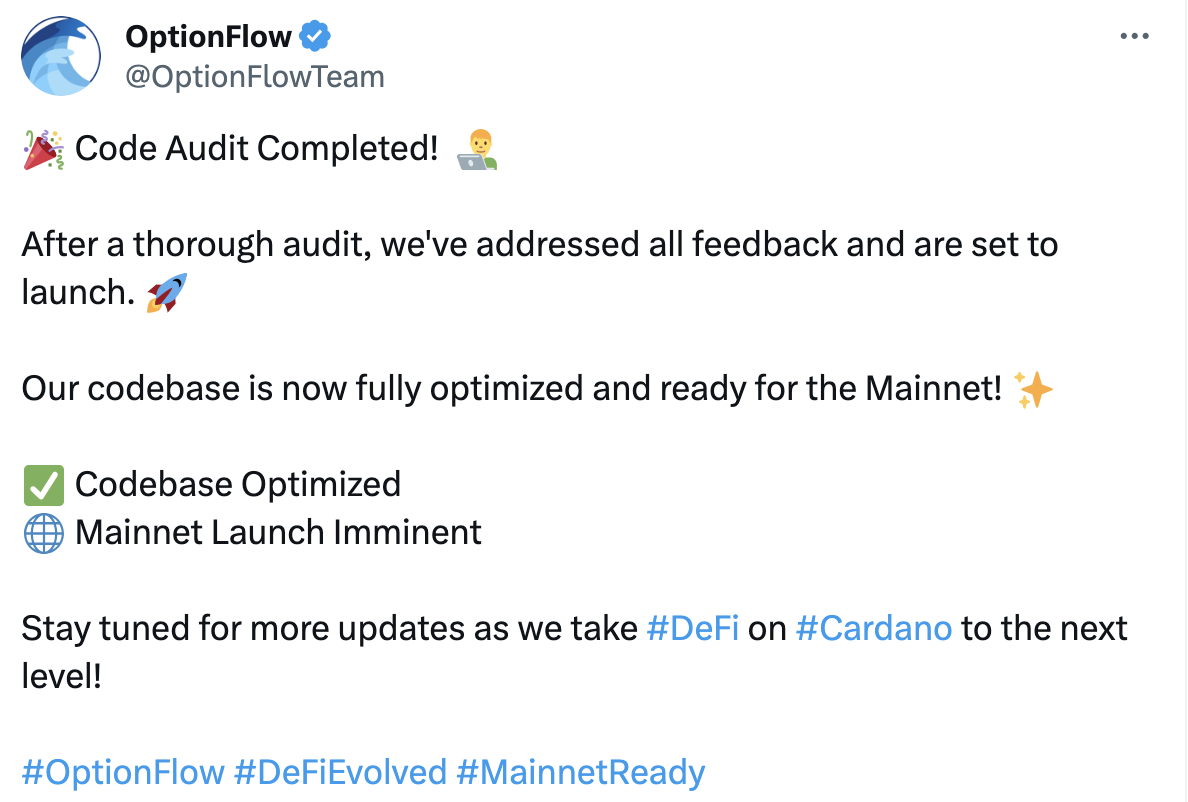
How does it work?
Minting an option refers to the process of creating a new options contract and making it available for purchase in the market. When you mint an option, you are essentially taking on the role of the option seller or writer, with specific obligations based on the type of option you create.
Mint an option with Optionflow:
- Choose the Type of Option: Decide whether you want to mint a call option or a put option.
- Call Option: Gives the buyer the right to buy the underlying asset at a specified price (strike price).
- Put Option: Gives the buyer the right to sell the underlying asset at a specified price.
- Set the Strike Price and Expiration Date: The strike price is the price at which the option can be exercised. The expiration date is when the option expires and can no longer be exercised.
- Mint the Option: Create the option contract with these details and make it available for trading.
- Collect the Premium: When someone buys your minted option, they pay you a premium. This premium is your income for taking on the obligation associated with the option.
Example:
Let’s say you want to mint a call option for a cryptocurrency, $XYZ, currently priced at $100.
- Type of Option: You choose to mint a call option.
- Strike Price: You set the strike price at $110, anticipating that $XYZ won’t exceed this price before expiration.
- Expiration Date: You choose an expiration date one month from now.
- Premium: You determine the premium (let’s say $5) based on factors like the time until expiration and the volatility of $XYZ.
Now, if $XYZ stays below $110 until expiration, the option will likely not be exercised, and you keep the $5 premium as profit. However, if $XYZ rises above $110 and the buyer exercises the option, you are obligated to sell $XYZ at $110, potentially below its current market price.
Minting options can be a strategic way to generate income or to commit to a future trade at a predetermined price. However, it’s important to be aware of the risks and obligations involved. The mintor of a call option risks having to sell the asset at below-market prices, while the mintor of a put option risks having to buy the asset at above-market prices if the market moves against their expectations.
Tokenomics of the OPT Token
The OPT token, integral to the OptionFlow platform on the Cardano blockchain, is designed with a comprehensive tokenomics structure, ensuring its utility, value, and integration within the ecosystem.
Total Supply and Distribution
- Total Supply: The OPT token has a fixed total supply of 45 million.
- Allocation: The distribution of OPT tokens is strategically segmented:
- MILK Holder Claim: 10 million OPT tokens are allocated for MILK token holders, allowing a 1:1 claim ratio. This initiative targets fostering a sense of community and rewarding existing supporters.
- Yield Farming Incentives: 5 million OPT tokens are reserved to incentivize users participating in yield farming, thus enhancing liquidity and platform engagement.
- Public Sale: A significant portion, 30 million OPT tokens, was made available during the public sale, targeting early adopters and platform supporters.
Utility and Use Cases
- Fee Discounts: OPT tokens can be used to avail discounts on transaction fees within the OptionFlow platform, thereby reducing the cost of trading.
- Premium Analytics Access: Holding OPT tokens unlocks advanced analytical tools on the platform, offering deeper insights and market intelligence.
- Governance and Voting Rights: OPT holders have the privilege to participate in governance decisions, influencing the platform’s development and policy changes.
- Community Engagement: The token also serves as a means for active community engagement, including participation in polls and discussions.
Incentivization and Rewards
- Airdrop for MILK Holders: As a gesture of gratitude and community building, an airdrop is planned for MILK token holders, further integrating the communities of both tokens.
- Staking Rewards: By staking OPT tokens, users can earn rewards, encouraging long-term holding and stability within the ecosystem.
Economic Model
- Deflationary Mechanisms: Certain mechanisms, such as token burns or reduced supply over time, could be implemented to create a deflationary pressure, potentially increasing the token’s value.
- Collateral Use: OPT tokens might be used as collateral within the platform, increasing their utility and demand.
The tokenomics of OPT are meticulously crafted to align with the platform’s vision of democratizing options trading on the Cardano blockchain. By balancing utility, incentives, and a strategic distribution model, OPT aims to strengthen the ecosystem’s growth, stability, and user engagement.
Market Cap and Price Prediction
First of all, reality check:
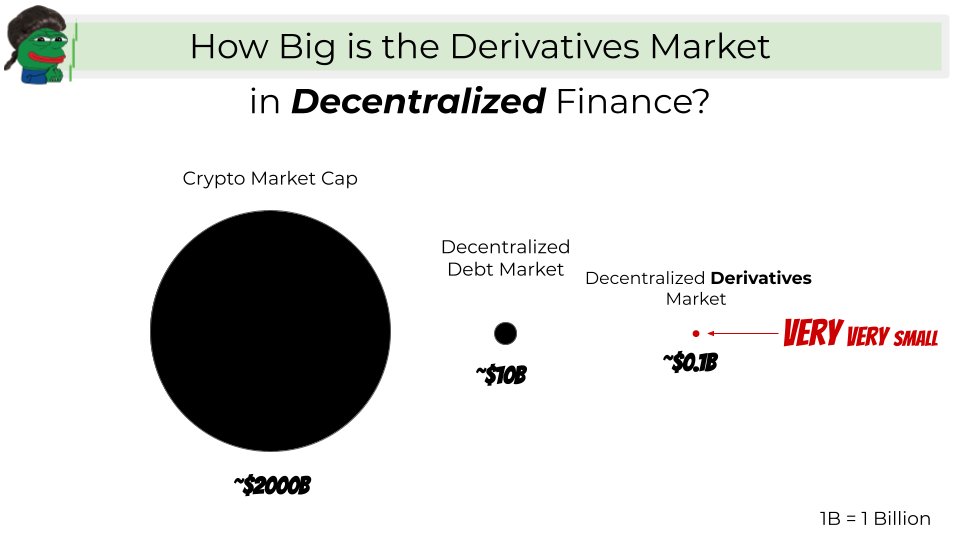
This data is from late 2021 but the figures didn’t move much: the decentralized derivative market is a 100M USD small world.
So why do we care about them and about OptionFlow?
Here it comes, my friend.
Put your sunglasses on.
This is the size of the derivatives market in the traditional non-crypto world:
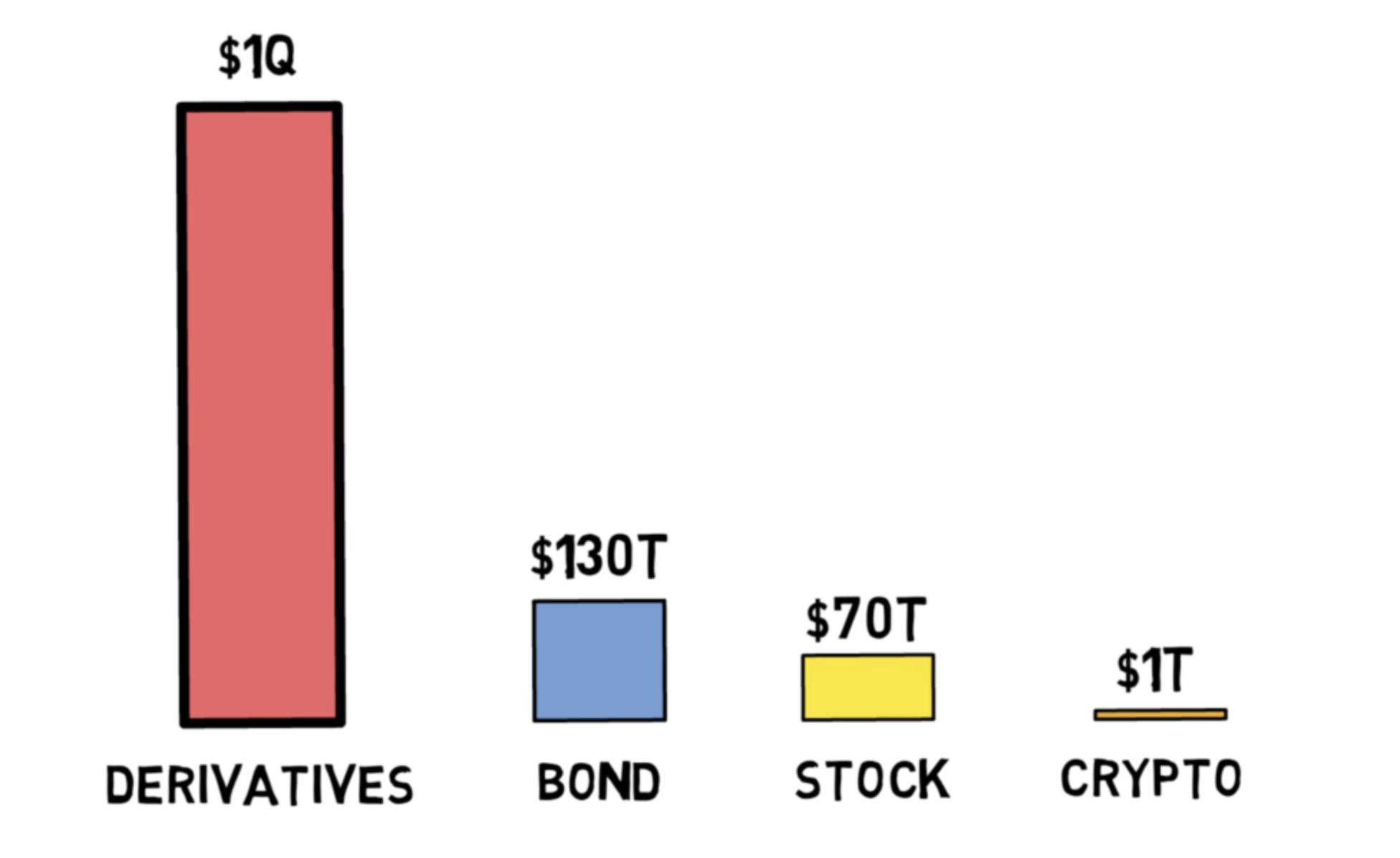
1 quadrillion USD. Spicy, isn’t it?
Let’s assume that the Cardano space goes to 500 billion USD by 2030 (20x current market capitalization), and the derivatives market grows to approximatively the same size (which is conservative as derivatives markets tend to become bigger than the spot market).
Now, if OPT takes only 20% of that cake along with other players like AXO or HUNT: this becomes a 100 billion USD monster. It would send the price of the OPT token to a totally absurd $2566.
Obviously this calculation is a lie in so many ways (wouldn’t be able to list all the approximations behind the reasoning) but it tells a story: the derivative market is an absolute blackhole and can skyrocket the price of the right project.
Conclusion
In conclusion, the OPT token, as the foundational asset of the OptionFlow platform, embodies a well-thought-out tokenomics model that aligns with the overarching vision of democratizing options trading within the Cardano ecosystem. The careful capping of the total supply at 45 million tokens introduces an element of scarcity, which is a fundamental economic principle that can contribute to the token’s long-term value appreciation.
The distribution strategy, which includes a specific allocation for MILK holders and incentives for yield farming, demonstrates a commitment to community engagement and platform growth. This approach not only fosters loyalty among existing users but also encourages new participants to join the ecosystem.
The utility of the OPT token extends beyond mere transactions; it is pivotal in governance, community engagement, and accessing advanced features on the platform. Such multifaceted utility ensures that the token remains an integral part of the ecosystem, driving user interaction and platform evolution.
Assuming Cardano’s market cap reaches $500 billion by 2030 and its derivatives market grows similarly, if OPT captures 20% of this market alongside others like AXO or HUNT, it could become a $100 billion entity, potentially skyrocketing the OPT token price to an unrealistic $2566. This hypothetical scenario, while overly simplified and not entirely accurate, highlights the immense potential of the derivatives market in boosting the value of successful projects.
This is not financial advice. This article is not sponsored. I’m invested in the Cardano ecosystem and I own OPT tokens (0.03% of my overall crypto portfolio).
